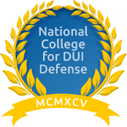- DUI
- Criminal Defense
- Florida DUI
- Traffic Offenses
- Drug Charges
- Marijuana Charges
- Violent Crimes
- Domestic Violence
- Temporary Injunctions
- Weapons Charges
- Theft Crimes
- White Collar Crime
- Juvenile Offenses
- Sex Crimes
- Violation of Probation
- Early Termination of Probation
- Seal or Expunge Criminal Record
- Criminal Appeals
- US Federal Offenses
- Misdemeanor Charges
- Felony Charges
- Co-Defendant Cases
- College Student Defense
- College Student Hearings
- FSU Students
- FAMU Students
- Florida Panhandle Arrests
- Extradition to Florida
- Bench Warrants / Warrants
- Emergency Bond Hearings
- Gambling Charges
- Drone Arrests
- Marsy’s Law
- UAS Infractions
- Introduction of Contraband
- Lying to Police
- Locations
- Case Results
- Our Firm
- Media
- Resources
- Blog
- Contact Us
eDNA and its Ethical Concerns
May 29, 2023 Don Pumphrey, Jr. Criminal Defense Social Share
New DNA technology has been extremely helpful over the years in helping law enforcement solve criminal cases. DNA evidence is usually found and gathered from a crime scene, whether it be from a weapon, blood splatters, or footprints. But what if police were able to collect and trace DNA from the beach? Or from the air inside the room? A new study by a University of Florida professor has highlighted eDNA and its potential use to gather human DNA evidence.
This page will define eDNA and what was covered in the study, along with the potential ethical implications and current process for law enforcement using DNA technology.
What is eDNA?
According to the United States Geological Survey, environmental DNA (eDNA) is the nuclear or mitochondrial DNA that’s released from an organism into the environment.
The DNA comes from the cellular material that is shed by the skin, excrement, mucous, hair, and carcasses. Environmental DNA has previously been used as a tool to detect invasive species, track vulnerable wildlife populations, and even rediscover species who were believed to be extinct.
Researchers claim that eDNA is found all over us—including in the air, water, snow, honey, and even within the things we digest such as a cup of tea.
Nature Ecology & Evolution Study
A University of Florida wildlife geneticist, David Duffy, was using eDNA to track diseases in sea turtles when he noticed traces of human DNA nearly everywhere. The realization led to a new study highlighting and discussing the use of eDNA for human applications.
Duffy and several other colleagues used readily available eDNA technology to determine how much human DNA information could be gathered in outdoor waterways, inside buildings, and other environments. The results from the study indicated that scientists could recover medical information from lingering human DNA found in the environment.
The study consisted of obtaining soda-can-size samples of water from a stream in St. Augustine, Florida. The genetic material was then fed through a nanopore sequencer to read the DNA.
From the samples, there was enough mitochondrial DNA to create a snapshot of the genetic ancestry of the population in the surrounding area. The generated snapshot aligned with the racial makeup from the latest census data. There was even one sample that met the requirements for the federal missing persons database.
To view the entire Nature Ecology & Evolution study, you can click here.
Potential Use for Law Enforcement and Criminal Law
Some forensic researchers believe that it may be possible to identify an individual from eDNA in small environments where few people have been. In October 2022, the Oslo University’s Hospital forensic research center began a pilot program to recover human DNA from air samples, which resulted in full Combined DNA Index System (CODIS) profiles from DNA from inside an office building.
But according to Robert O’Brien, a forensic biologist at Florida International University, the data Duffy and his colleagues recovered from their study would not currently work for the methods of law enforcement to identify people.
Typically, a DNA analyst will look at 20 markers across the human genome that are tracked by the F.B.I.’s CODIS program. These markers are useful only if there are several coming from the same person. Considering eDNA only captures one marker at a time, it can be difficult to analyze an environment such as a stream in Florida.
Concerns Over Ethics and Privacy
Although environmental DNA has not been a widely discussed issue regarding bioethics, the new studies will likely result in just that. Dr. Anna Lewis, Harvard ethics researcher, claims that the technology could be used as surveillance, potentially to keep track of those with medical conditions or disabilities.
There is some concern over who will be allowed to use the technology and for what purpose. Just as easily as eDNA samples getting used to help researchers determine mutations and medical issues within the community, it also has the potential to find and prosecute ethnic minorities.
“This gives a powerful new tool to authorities,” Dr. Lewis said. “There’s internationally plenty of reason, I think, to be concerned.”
In addition to concerns over ethics and privacy, scientists are still not 100% sure how to determine the fundamentals of eDNA. For instance, determining how eDNA travels through water and air, or how it degrades over time.
Under the Fourth Amendment, law enforcement is prohibited from an “unreasonable search and seizure.” Unless they have a search warrant or probable cause to do so, police cannot unlawfully search a person’s house, car, person, or other belongings. This is a concern for newer DNA technology, which can have the potential to erode the privacy of citizens.
Who Gets Access to DNA?
In the United States, there are a wide range of rules regarding who is allowed to both collect and analyze DNA evidence. Although researchers are eligible to delve deeper into eDNA, there are currently no guardrails for law enforcement to try out new DNA technology.
Other countries like Germany have implemented an approved list for law enforcement on which DNA technologies and methods can be used. On the other hand, the U.S. does not follow as organized of a structure. In some cases, the public only hears about new DNA technology after police have announced it during an arrest conference. Some experts claim that eDNA and new DNA technology misuse relies heavily on the courts and which safeguards are implemented.
“There’s an imbalance in almost all systems of the world between what law enforcement is allowed to do, versus publicly funded research, versus private companies,” said University of Vienna Professor Barbara Prainsack.
During a criminal trial, the judge has the responsibility to determine whether an expert witness or scientific testimony “rests on a reliable foundation,” or the Daubert Standard. The Daubert Standard is when a trial judge assesses an expert witness’s testimony to determine if it is scientifically valid or not.
Finding a Defense Attorney in Tallahassee, Florida
DNA evidence is crucial to a criminal investigation, often leading law enforcement to the person responsible for the crime. However, it is important to note that there have been concerns about DNA technology and its accuracy. If you or a loved one are facing a criminal charge in Florida, your first step should be speaking with a legal representative near you. You can end up getting sentenced to lengthy prison sentences, pay highly expensive fines, or both.
The attorneys at Pumphrey Law Firm have spent years defending Floridians who have wrongfully been accused of a crime. Don Pumphrey and his team understand the ins and outs of the legal world, offering you first-hand insight and guidance throughout your case. To receive a free consultation, contact our office at (850) 681-7777 or leave an online message on our website.
Written by Karissa Key










